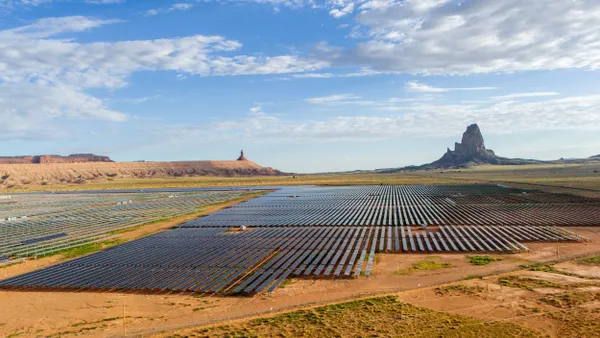After two decades of stagnant electricity demand growth, the United States could need up to 300 GW of incremental effective capacity by 2035, according to a BofA Global Research report published Monday. But the growth will not be uniform, with a few regions showing sustained growth, the firm said.
The 300 GW is BofA’s high growth scenario, which it cautions is “not a realistic goal.” Under the base case scenario, BofA estimated 1.5% nationwide long-term demand growth would require an incremental 100 GW of effective capacity by 2035.
Given that capacity factors vary between resource types, the report notes that the installed capacity needs “will be well in excess of that amount.”
The report also notes that demand growth “is not linear or universal,” and that “there will be winners.” Some regions could see no need for incremental capacity additions while others will need much more to contend with growing demand from data centers, building and transportation electrification, industry and other sources.
The Electric Reliability Council of Texas, the Southwest Power Pool and the U.S. Southeast, Southwest and Northwest, “will all need significant investment in new effective capacity,” the report said. “Given the tolerance for high density, fossil effective capacity in those areas where we believe demand growth will materialize, we see these effective capacities build out targets to be achievable.”
BofA looked at two sets of demand data: one of annual increases from 2015 to 2024 and another focused on the 2023-2024 period where many regions saw large increases in electricity demand.
The Southwest saw the highest demand growth of any region last year, at 7.9%, the report noted. “But due to its large amount of available capacity, the effective capacity needed isn't as large as other regions.” BofA estimated the Southwest will require 40 GW to 45 GW of effective capacity in the next decade. At a much lower growth rate, however, it is possible that no incremental capacity would be needed.
The Southeast saw total electricity demand rise 6.4% last year, according to BofA. The region’s generation base has gotten a boost from the recent addition of Vogtle Unit 4 in Georgia but to continue this demand growth for the next decade the region would need to add 110 GW to 121 GW, “a substantial increase,” said BofA. “On the other side if it follows historical demand growth, no additional capacity will be needed.”
ERCOT saw demand grow 5.6% last year, and a robust 3.3% annually over the last decade, said BofA. A continuous level of growth “seems to be a consensus for ERCOT,” meaning the region could need “at most 74 GW in the next decade.”
SPP, which saw demand grow 5.5% last year, would need about 40 GW to 45 GW over the next 10 years at that rate. The relatively low need for new capacity “is primarily because there is a surplus in SPP's capacity which allows for large reserve margins. Demand is also relatively low for the area the RTO covers so there are many different power players within it.”
The Northwest’s 4.1% demand growth last year points to a need for additional effective capacity of anywhere from 40 GW to 45 GW, BofA said. If growth is only about 1.3% annually, then the Northwest would need 10 GW to 15 GW.















